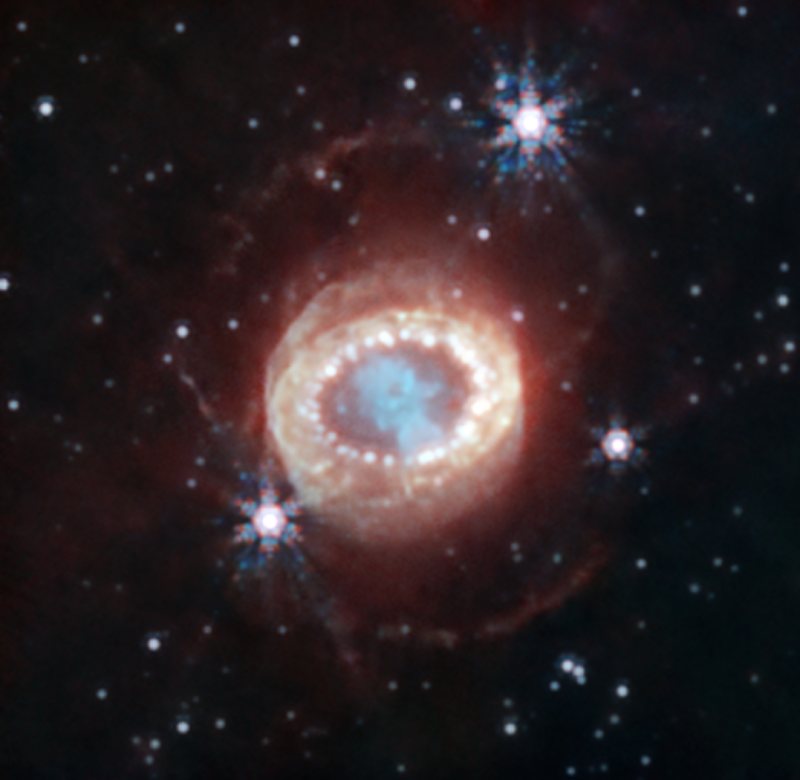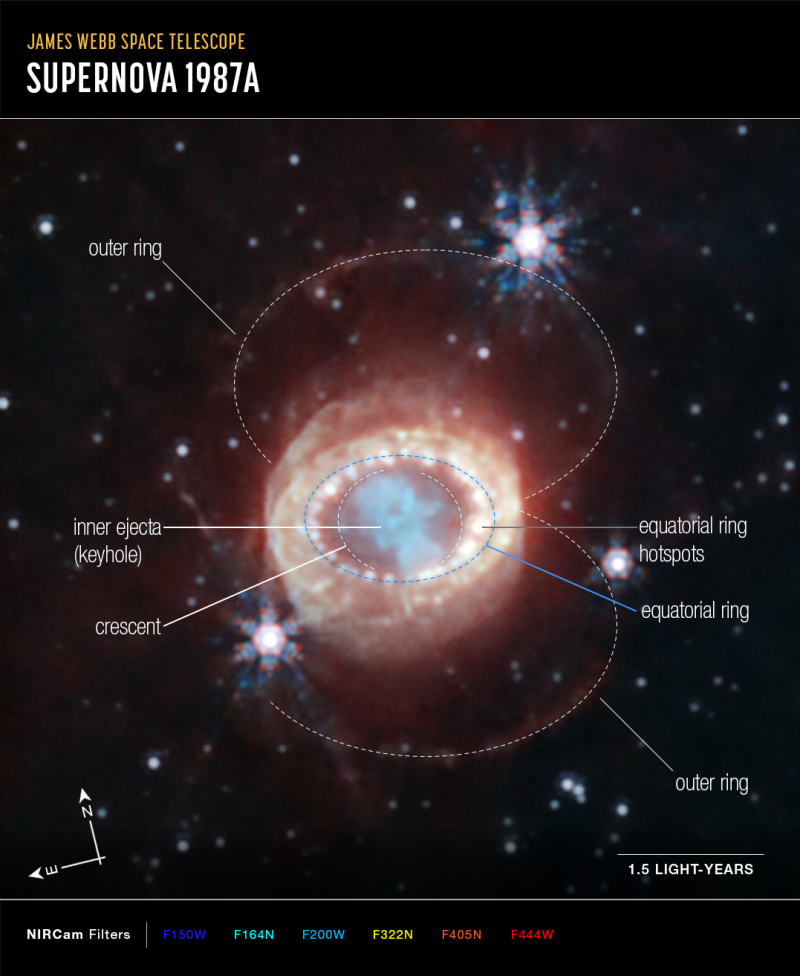
See Supernova 1987A in infrared light
In 1987, astronomers and stargazers alike were treated to a star exploding in the Large Magellanic Cloud, a satellite galaxy of the Milky Way that observers can see from the Southern Hemisphere. The explosion happened when a large star reached the end of its life and exploded in a supernova. Scientists named the event Supernova 1987A, or SN 1987A. For a while, stargazers could spot it with the unaided eye, and astronomers raced to collect data on this unique event. Now, on August 31, 2023, NASA announced that the James Webb Space Telescope has turned its infrared eye at the remains of this exploded star and shown us structure we couldn’t previously see, providing insight into how a supernova develops.
The keyhole of Supernova 1987A
The supernova lies about 168,000 light-years away in the constellation Dorado. Webb peered across this great distance to spy the former star’s dusty remains, including a central structure dubbed the keyhole. Appearing as bluish in the infrared image, the keyhole consists of clumps of gas and dust from the shredded star. Dust in the area of the keyhole is so dense that even Webb can’t penetrate its core, instead revealing the dark, obscured hole portion of the keyhole.
First look at crescent structures
The new Webb image shows us, for the first time, two faint crescent-shaped structures on either side of the keyhole. Scientists said the crescents are part of the outer layers of gas disgorged in the supernova explosion. And scientists also said the reason we can see them is due to limb brightening. In this instance, the limb brightening is an effect of our viewing angle of this three-dimensional object, making it appear like there’s more material and thus brighter.

The rings
The bright ring surrounding the keyhole is an equatorial ring. That is, it expanded outward from what was the region of the star’s equator. The star was spewing out the ring’s material for tens of thousands of years before the supernova. Then, after the supernova blasted outward, it barreled into the earlier material, creating the bright hot spots you see in the image.
The hourglass-shaped outer rings also show evidence of hot spots as the supernova’s ejecta continues to barrel outward into older material.
Bottom line: The James Webb Space Telescope has taken a new view of Supernova 1987A, a star that we saw explode nearly 40 years ago. The new view shows structures that provide clues to the supernova’s development.











